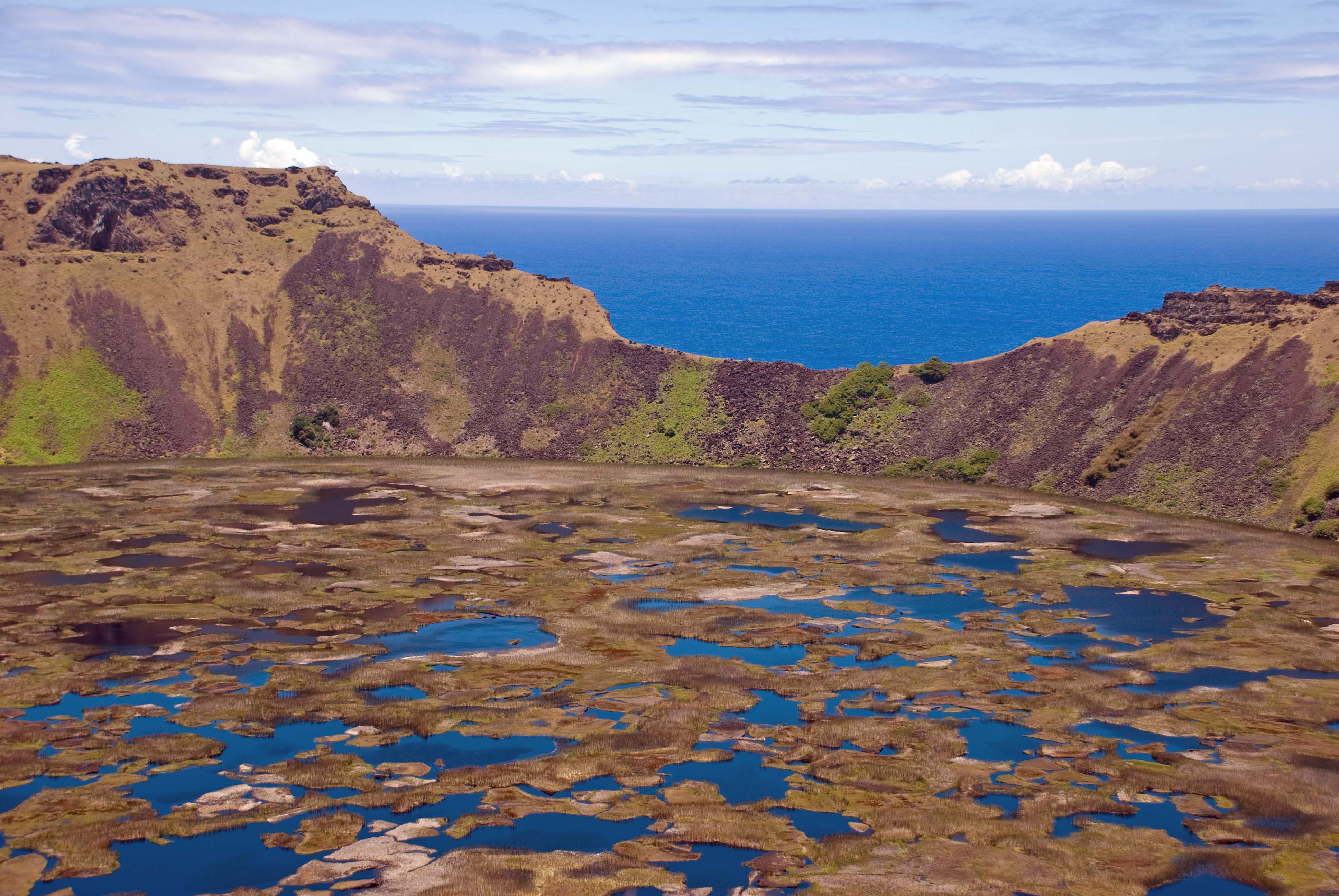
EASTER ISLAND: WHERE SEEING IS BELIEVING

“Heading southeast at 60 feet, about 20 seconds after we pass the lava outcrop to the right, there will be a surprise.”
I pondered what sort of sorpresa Claudio, our slyly grinning divemaster, could guarantee we would encounter on our first Easter Island dive. It isn’t very often that a pre-dive briefing includes mysterious predictions along with precise depth, time and location guidelines. But then nothing is ordinary about Easter Island.
Located 2,600 miles west of Chile and about the same distance east of Tahiti, Easter Island has been since its volcanic birth one of the most isolated islands in the South Pacific. Seafaring Polynesians settled there sometime around 700 A.D., calling their new home “Rapa Nui.” The island was completely unknown to Westerners until 1722, when Dutch explorer Jacob Roggeveen visited on Easter Sunday and bestowed the island’s commonly known English name. During the centuries that the indigenous people of Rapa Nui lived in isolation, they constructed hundreds of massive stone representations of gods and prominent local leaders known as moai, and to this day scholars debate vigorously how these gigantic statues, many weighing several tons, were transported tens of miles all over the island without machinery.
I traveled to Easter Island to satisfy many curiosities, among them checking out the legendary visibility of the island’s dive sites. I was not disappointed. Blissfully free of pollution, runoff, ship traffic and similar effects of dense human population afflicting other coastal areas, the Pacific Ocean off of Easter Island boasts gin-clear clarity. Visibility on even a bad weather day averages 120 feet, and often exceeds 160 feet. The water has an almost silky feel to it, and remains in a comfortable temperature range of 69˚ - 81˚F throughout the year. The downside to diving Easter Island is that there isn’t the large diversity of marine life found elsewhere in the Pacific, such as the Galapagos or coral reef-fringed atolls. But one can readily find turtles, sharks, various colorful endemic fish, weird-shaped caves and tunnels formed by lava as it cooled underwater, and the occasional local oddity.
Divemaster Claudio from ORCA dive shop in Hanga Roa, the one and only town on Easter Island, took the lead as we approached a dark, jumbled mass of solidified lava a little over 60 feet down on our first dive. He wanted to make sure we wouldn’t miss the “surprise,” but he need not have worried since with the stunning visibility in all directions it would have been impossible to miss what we saw next: a 25-foot tall moai, perched upright on the bottom and staring blankly out to the limitless depths. So startling – not to mention eerie – was the vision of this underwater sentinel that I think all of us guest divers almost dropped our regulators along with our jaws.
Often while diving I’ve experienced a little adrenalin rush upon seeing marine animals much larger than myself close by, even though I know I’m on their turf and such encounters are to be expected now and then. Some pieces of the man-made world like shipwrecks are also thrilling yet unsurprising features of the depths. But never in 2 decades of scuba adventures have I thought of coming face-to-face with a human statue the size of a bus. That alone was worth the price of admission!
After surfacing, I asked Claudio how the moai came to be there, 65 feet down, standing at attention. Earthquakes, volcanic eruptions and tsunamis have rearranged Easter Island’s geography often over time, but surely the marine moai we saw didn’t just tumble perfectly into place under the sea? Claudio’s response was another inscrutable grin and a shrug. Translation: “Quien sabe?” (“who knows”?) I smiled and nodded, reminded again that part of the magic of travel is finding there are still places on earth where wonders outnumber answers.
If You Go: LAN Chile flies several times weekly to Easter Island from Santiago, Chile and Papeete, Tahiti. There are two dive shops on the island, ORCA Diving Center (www.seemorca.cl) and Mike Rapu Diving Center (www.mikerapu.cl). Both are excellent, have very good dive gear on hand (I didn’t bring my own and was completely happy using their gear), and charge about US$50 per dive. Spanish, English and Rapa Nui are commonly spoken. Currency is the Chilean peso. Accomodations include many guesthouses and small hotels ranging from $25 to $200, depending on your tastes and tolerances.

Written by Lori Osmundsen. Photo Credits Lori Osmundsen, Oregon